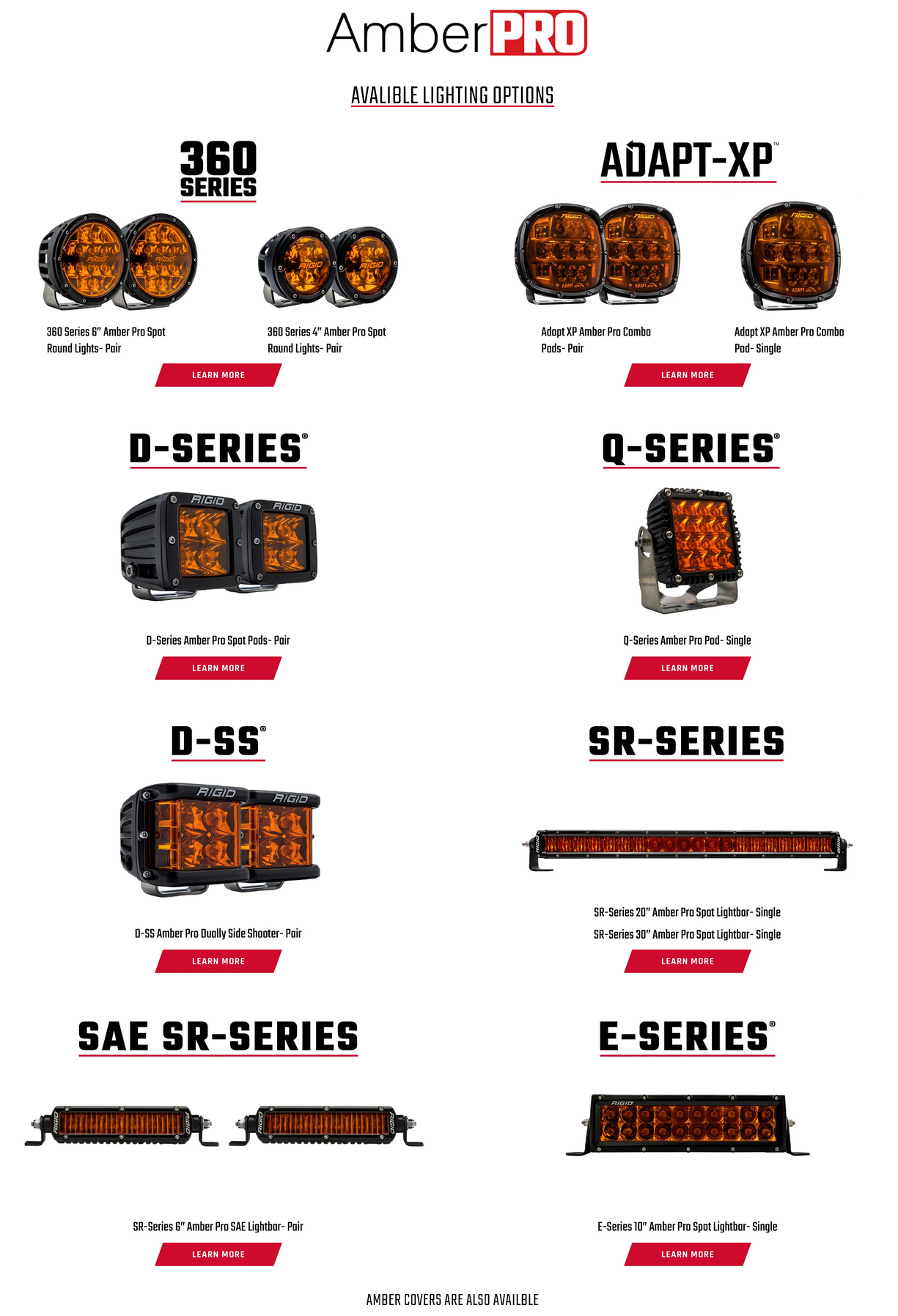NEW from Rigid Industries, available from Battle Born Offroad!

Introducing RIGID Amber PRO Edition, our most highly anticipated lighting edition to date. RIGID has been redefining performance for the last 17 years, and the new Amber PRO Edition symbolizes our ongoing commitment to the off-road community. The Amber PRO Edition brings next-level performance and is a must-have output color for the serious off-road enthusiast when enhanced visibility is required. RIGID’s Amber PRO Edition surpasses the expectations of professional drivers when racing through some of the most technical terrains across the US and Mexico.
Click here to purchase!


As seen in the full electromagnetic spectrum, the visible light spectrum is the small section observable to the human eye, which is the wavelengths of approximately 400 to 700 nanometers (violet to red). The human eye contains cells called cones, which act as receivers allowing us to see the wavelengths in this range. The eye can see red, green, and violet, whereas all other colors we perceive mix these colors. For instance, yellow contains both red and green.


Below you can see the color output of our standard white LEDs. The chart shows that the blue regions are prominent while all other colors are suppressed or missing altogether. Suppressing these colors makes LEDs so efficient electrically compared to other light emitters.
Violet and blue light are on the end of the spectrum with the shortest wavelengths in the visible light range. This causes blue light to scatter more in the atmosphere and makes the sky appear blue. When the sun is low in the sky at sunrise and sunset, the light must travel further through the atmosphere. We don’t see the blue light because it gets scattered away, while the longer wavelengths, closer to red, are not scattered as much.
A similar scatter of particles is what we see from white LEDs in the offroad market in adverse conditions. The blue light emitted from the LEDs hits the particles in the air and scatters, preventing you from seeing through. Removing the blue light reduces the scatter and is what allows your eyes to perceive further.

Where graph one above represents our standard white LED output behind a clear lens, graph two and three represents our white LEDs behind our yellow and Amber PRO lens. You can see the elimination of blue and green light due to it being filtered through the colored lens. The darker the lens color, the less output you will get. The Amber PRO Edition RIGID has created is the ideal color to maintain optimal light output while still performing in adverse conditions.


The next comparison is between amber LED vs. amber lens. Using the RIGID D-series as an example, the D-Series with amber LEDs has approximately half of the peak intensity that the D-series with the amber lens has: LEDs Lenses 16,218cd vs. 34,340cd We went with the change in lens color over LED because of the significant difference in peak intensity between LEDs and the lens. The drop in light output from the clear lens to the colored lens occurs when that white light is converted from blue to another color. There is a loss of energy that happens in that process. Even with that loss of energy, we end up with a higher output than what is possible with an amber LED. The Amber PRO Edition also provides a more cohesive aesthetic among the OEM light colors.

Click here to purchase!







